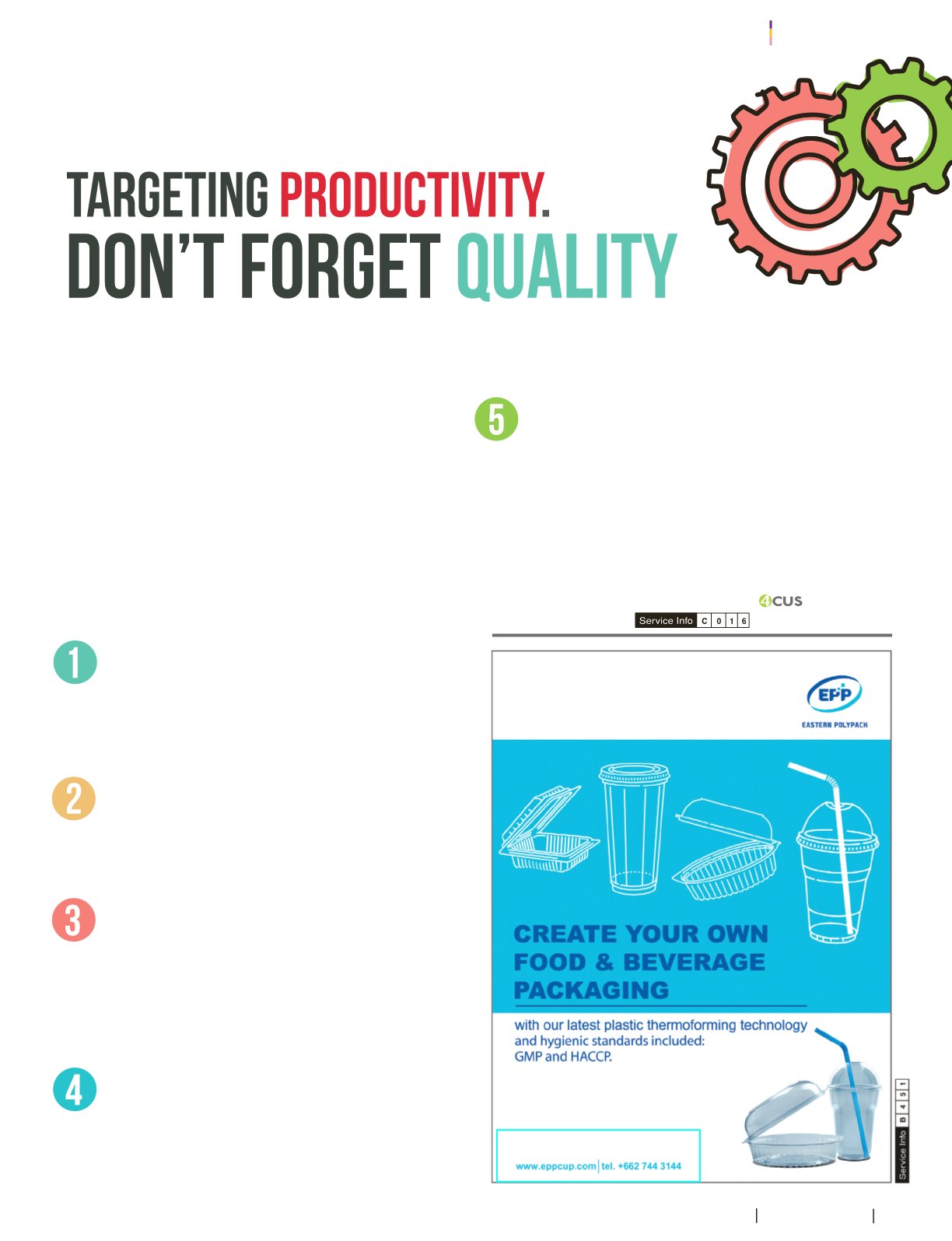
99
JUN2017 FOOD FOCUS THAILAND
SAFETY
ALERT
In the competitiveworldof business, whereprofitability is themainobjective, achieving targeted sales isnot theonlyaspiration,
but also reducing overall costs and increasing output; or what is collectively known as “Productivity”.
Increasing productivity is usually carried out as a planned project
whereexperiences areexchangedandpositive competitions aremade
amongplayers in the same industry. This competition, by principle, is a
good and beneficial practice, yet some important things usually get
overlooked, such as the issueof quality and food safety.
Evidently, times and times again, productivity was expected to be
achievedmainly through cost reduction, whilemaintaining food quality
wasconsideredof lesserpriority.Simplyspeaking,weput theproductivity
issueaboveQualityandFoodSafety.Asa result,whenproblemsarose,
the true causesweremaskedand theproblemswere not straightened,
perpetuating the vicious loopof findingand fixing thewrong thing.
Haveanyof the followingscenariosoccurred inyour
plant?
Low-priced rawmaterialsweremindlesslypickedwithout aproper
quality check or specification assurance; which sometimes was
just a result of both manufacturers and suppliers’ ignorance.
Disinfectant solution, for example, that was quantity-sufficient but not
efficientenough tosterilizeorkillgermsdue to thechange in themolecular
structureof the solution itself, which shouldbebut was neglected tobe
tested for its quality.
Amount of preservativeagentswas reducedor cut completely for
cost reduction reason, without taking into account the risk of the
products’ expiration;with theconfident that theproductswouldbe
soldout by the time they expires. This case couldbepassable, at best,
given that there should beagoodenough innovation in preservingand
storing goods.
Some manufacturing procedures were skipped in order to gain
moreproduction time.Machine cleaningprocedureswereusually
the first to be cut down. Some factories may bypass lab test of
cleaningprocess triggering incompletecleaning.Errorscanhappenwith
the smallest of change in manufacturing procedures; temperature set
just oneor twodegrees lower than specified, or thedissolving timewas
shortened justa fewminutes, thinking thatnoseriousdamagewasmade
and no harmwas done. In fact, damage has already beenmade, only
that it was not apparent at themoment.
Water was added to gainmore product yield, claiming the added
level wasacceptable, unawareof theeffect it had, ormight have,
on the quality and safety of the products. The addedwater could
inducemicroorganismgrowthor expansion. Thiswasone fineexample
where productivity has beenprioritized over products quality.
Some employees were more concerned about the KPI (Key
Performance Index) than thework. Someemployeemight fear that
the unimpressive KPI would reflect their performance in general,
and tried tocoverupanyemergingproblemswithout really trying tosolve
the issues, which actually perpetuated the problems even further. An
employee, for instance, might neglect to report a product that expired
before thestatedsell-by-date, ignoring toexamine theprobablecauseof
bad rawmaterialsor improper recipe; hence theproblemwasnot solved
or even dealt with.
Thiswas just anexampleof how theconcept of productivityhasbeen
wronglycarriedoutbymany factories.Weshouldalways remindourselves
that priorities should always bemore on product quality and consumers
safety, than onproductivity and cost reduction.


